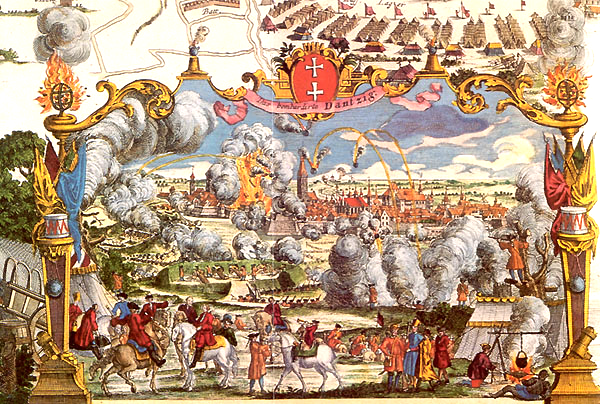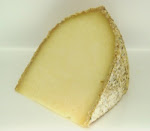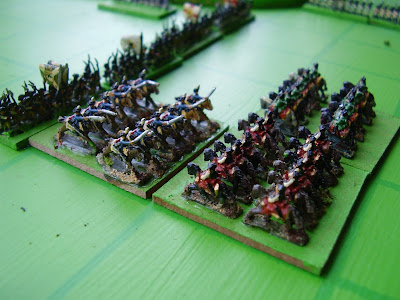Lobositz itself is such an intriguing battle, if it hadn't actually been fought no doubt C S Grant would have made it up as a "wargames scenario".
Having a spare hour before lunch I decided to have go at using a two foot table as opposed to DAF's fifteen footer. For speed I went back to the rules I originally though of a few weeks ago. For the OOB I used the original Volley and Bayonet ruleset.
Austrian troops set up in an excellent defensive position behind the Morellenbach and around Lobositz, whilst Croats swarm over the Lobosch (top right). The Prussians advance onto the Homolka and in the valley.
Move 1 - Austrian cavalry move forward to meet the advancing Prussians
Move 2 - the cavalry clash...
and the Austrians come out on top: routing two Prussian cuirassier brigades.
The Prussians advance towards the croats on the Lobosch
Move 3 - The Austrian cavalry press on
whilst on the left the Austrian horse pull back out of artillery range and the Prussian horse advance
The white coats move right to reinforce Lobositz

Back in the centre the few remaining Prussian dragoons rally behind their infantry.
Move 4 - the Austrian cavalry rallies back in the face of advancing blue coats whilst the Lobosch is reinforced by Austrian foot.
Move 5 - the Prussians advance all along the line
It becomes apparent that any further assault would be futile against such defensible terrain.
The Prussians fall back.
The Saxons are rescued.
Austria wins the war and Frederick is exiled to Massachusetts where, in 1775, he becomes the first president of the new country of USA - possibly.




































































